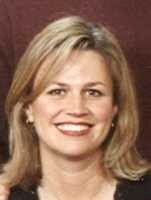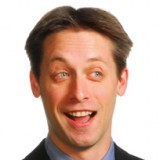Lose Weight > Common Sense To Lose Weight > Obesity > Alternative And Complementary Remedies For Obesity, Diabetes, And More
Alternative And Complementary Remedies For Obesity, Diabetes, And More
The phrase alternative medicine refers to health care techniques that are used instead of mainstream medicine. For illustration, making use of a special diet to treat cancer instead of undergoing radiation and chemotherapy is alternative medication. Complementary medicine is not the same as alternative medicine. Complementary medication is used together with mainstream medication. Using nutritional supplements for diabetes in addition to conventional medical treatment is an example of complementary medication.
Complementary and alternative medicine includes a range of medical systems. Eastern cultures have used long-established Chinese medicine, Ayurveda, and acupuncture for centuries. Homeopathic medication and naturopathic medication are very recent alternative medical practices.
Mind-body medicine uses techniques such as meditation, art, mental curatives, and dance to increase the mind's ability to affect the functioning and curative ability of the body. Clinical depression at times responds well to such techniques.
Dietary supplements, herbs, and vitamins are natural remedies used in both complementary and alternative therapies. For illustration, research indicates that leaves and flowers of the hawthorn tree are safe and useful for treating mild heart failure. Flaxseed oil is used to treat arthritis, while ginger relieves pregnancy-related queasiness and vomiting. NCCAM continues to investigate the outcome of omega-3 fatty acids on heart disease.
Chiropractic, massage therapy, and osteopathic manipulating involve moving areas of the body to re-establish alignment, relax the body, and support healing. Energy medication uses invisible energy fields for healing. Reiki, therapeutic touch, and the use of electromagnetic fields are examples of energy medication. Reiki is a twentieth century Japanese healing art in which the practitioner places his or her hands above the body of the person being treated. Besides promoting overall health and well being, Reiki can give relief from the side effects of conventional medical treatments such as chemotherapy.
NCCAM finances research on complementary and alternative approaches to obesity. Obesity has reached epidemic proportions in the United States, affecting kids as well as adults. A lot of health problems, such as type 2 diabetes, that had formerly been seen typically in adults have now become normal in kids and adolescents. The complexity of obesity warrants a multi-faceted line of attack to prevention and treatment.
The NCCAM urges persons who are using complementary, alternative, and natural remedies to tell their physicians. Doctors need to know about other remedies because of possible conflicts with conventional therapies. For example, certain natural remedies interact with prescription medicines and can cause unwanted sides effects.
There is another reason to discuss complementary and alternative treatments with doctors. Increasingly, physicians trained in mainstream medication understand the curative power of other approaches. Many are well-informed about complementary and alternative therapies and willing to work with patients who are interested in using natural remedies and cures and other non-conventional avenues of healing.
Related Articles
-
Why Losing Weight Is Good For You
-
How to burn fat the easy way..the only way?
-
How to Prevent Snoring Quickly and Easily!
-
A Natural Cellulite Remedy is Simpler than You Think and Everyone Can Achieve It!
-
Fight Morbid Obesity and Stay Fit
Obesity is a widespread problem and there is no doubt about it. It is
-
Fat Loss For Good
- DON'T MISS
- Obesity Epidemic leads to Bariatric Surgery and Post Bariatric Surgery
- Sleep Can Help You Lose Weight!
- Tips in Preventing Obesity in Children
- Child Obesity Awareness - How To Prevent Child Obesity For The Future?
- Why Most Diets Fail
- Obesity, Diabetes, Heart Disease, High Cholesterol, And High Blood Pressure: Can They Really be Prevented, Managed or Reversed?
- Natural Weight Loss Supplements - You guide to Rejuvenate
- Living with Your Diet
- Excessive Pregnancy Weight Gain a Childhood Obesity Risk
- Stop Your Sweet Cravings Fast with Pink Grapefruit Essential Oil




